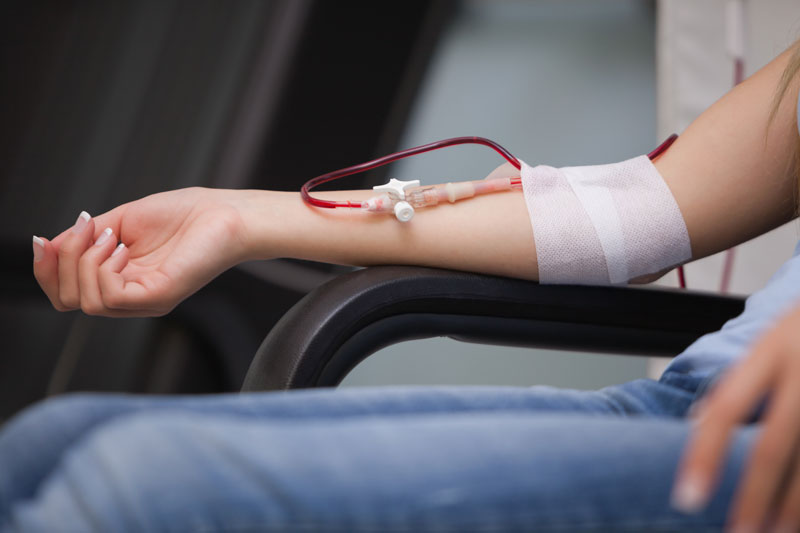
by kidneyassociates | Sep 22, 2013 | KAKC News
Blood pressure is measured using two numbers. The top number, or systolic pressure, occurs when the heart contracts during a beat. The second number, or diastolic pressure, occurs while the heart is relaxed between beats. This measures the force pushing out on our vessels by the blood they contain. Blood pressure is written as a fraction such as 120/ 80 mmHg (millimeters of mercury) with systolic pressure on top and diastolic on the bottom. Hypertension, or “high blood pressure,” is when blood pressure increases above 140/90 mmHg. As many as one in three adults have high blood pressure. It has been called the “silent killer” and often causes no symptoms. The best way to know if you have hypertension is to have your blood pressure measured by a health care professional regularly. Hypertension increases the risk for many diseases including heart attacks, heart failure, stroke, peripheral vascular disease, and kidney failure. Hypertension can lead to early death if not treated appropriately. A person’s risk for hypertension can go up with obesity, low physical activity, high salt (sodium) diet, excessive alcohol intake or a family history of high blood pressure.
If you have or think you have hypertension there are many things you can do to help treat it and reduce your risk of life-threatening illness. Lose weight if you are overweight or obese. Exercise most days of the week. Even 30 minutes of walking a day can help. Cut back on the salt (sodium) in your diet. Reduce the amount of alcohol you drink to no more than one or two drinks per day. See your doctor regularly. Take medications you start for high blood pressure regularly. Talk to your doctor if side effects or the cost of your medications are a problem. There are many different types of blood pressure medications and some are less expensive. Do not stop medications suddenly on your own. Getting an automatic blood pressure cuff to use at home can often help you and your doctor adjust the dose or number of medications you take. See see your doctor regularly and talk about any questions you have.

by kidneyassociates | Sep 22, 2013 | KAKC News
By: Timothy K. Neufeld
Hemodialysis is the process whereby blood is cleaned through an artificial kidney. This is done in people who have kidney failure to the point where they are no longer able to have adequate control of metabolic processes. The dialysis access is a critical part of doing hemodialysis treatments. To do adequate hemodialysis it requires that a large volume of blood is continuously sent through the kidney filter. To have this occur, one needs a conduit to have access to the body’s blood supply throughout the course of the hemodialysis treatment.
There are three types of hemodialysis access which are commonly used. The first, and preferred type, is the arteriovenous fistula. This is a surgical connection between an artery and vein, created by a vascular surgeon. This is most commonly placed in the upper arm, and at times, if the vessels are of good enough quality, in the forearm. The fistula provides the preferred access because it is the person’s own artery and vein that are involved, with no placement of any artificial vessel. They tend to have a long duration of lifespan, and very low infection rates. To evaluate adequacy of the vessels, prior to placing the fistula, an ultrasound of the artery and vein is usually done to evaluate size and existing bloodflow. Once placed, a maturation time of 2 to 3 months is usually required for the fistula to be ready for use.
The second choice for hemodialysis access is an arteriovenous graft. This is an artificial tube, placed underneath the skin, with one end attached to the feeding artery, and the other end attached to the outflow vein. This also requires a surgical procedure. It might be placed in the forearm, upper arm, or as a last resort, in the thigh. It’s benefits are that it can be used within 2 to 3 weeks. Grafts tend to have very good blood flow. Because it is an artificial vessel, it has a somewhat higher infection rate than a fistula.
The least preferred access is a tunneled dialysis catheter. This is a double barrel tube, with the indwelling portion placed into one of the large veins in the chest, and the exterior portion brought out through a small hole in the skin. The catheter may be used as a bridge access while waiting for maturation of a fistula or a graft. A catheter can be used immediately after being placed. The problem with the catheter is that it has the highest of all infection rates.
The nephrologist, dialysis nurse, and care coordinator will work as a team to help each individual choose and obtain the best access for their care.



Recent Comments